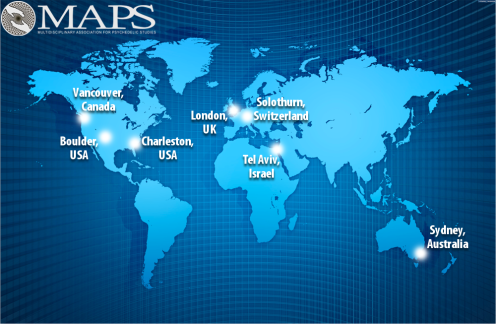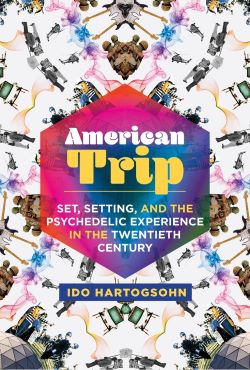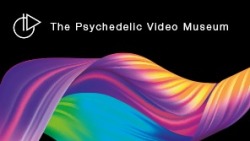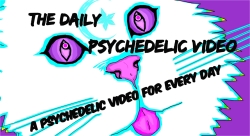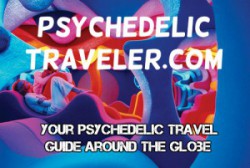The state of psychedelic research: An interview with Rick Doblin
The state of psychedelic research: An interview with Rick Doblin
In August 2012, I met Rick Doblin at his home near Boston to interview him for my research about the role of set and setting in the psychedelic debate of the 1960s. We set out on a long walk in the park, as Doblin explained to me the current state of psychedelic research. Lately, I met Doblin at the Psychedemia conference which took place at the University of Pennsylvania in September 2012 and had the chance to discuss the topic with him again. The interview below is based on both those conversations. It was originally published on Reality Sandwich.
***
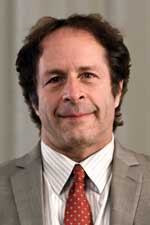 “You know, it was actually the holocaust that was my main motivation for doing what I do,” told me Rick Doblin, founder of the Multidisciplinary Association of Psychedelic Studies (MAPS), late one night as we are sitting together after a long day of lectures in the psychedelic conference Psychedemia.
“You know, it was actually the holocaust that was my main motivation for doing what I do,” told me Rick Doblin, founder of the Multidisciplinary Association of Psychedelic Studies (MAPS), late one night as we are sitting together after a long day of lectures in the psychedelic conference Psychedemia.
“The Holocaust brought you to psychedelic research? How?”
“It was my recognition that this catastrophic abuse of power and violence was made possible by ignorance, fear, scapegoating and people projecting their shadow onto others. Psychedelic psychotherapy and the mystical sense of unity that psychedelics can generate can be an antidote to all of those things.”
Having a strong metaphysical foundation for your work is probably necessary when that work entails challenging the current status of the law, government agencies, and well entrenched fears; however things are not always that serious with Doblin. Sporting a friendly, seemingly perpetually cheerful smile, and always enthusiastic to discuss the burning issues of research, Doblin, who earned his PhD in public policy from the Kennedy School of Government at Harvard University, looks like the perfect poster boy for psychedelic research. He has been playing a central role in advancing the cause of psychedelic research since 1986, when he founded MAPS, an organization which acts today as the central connecting and facilitating platform for psychedelic research around the world. In the past decade, MAPS has been leading the research on MDMA, treating Posttraumatic Stress Disorder (PTSD) in war veterans. It has also sponsored research on the use of LSD and MDMA for treating patients with end-of-life anxiety in terminal patients, and the use of ibogaine and ayahuasca for the treatment of opiate addictions.
“The way psychedelic researchers are doing this now is that we are focusing on two main fields in making psychedelics available through prescription” says Doblin. “Heffter Research Institute is leading the effort on psilocybin, focusing its research on the use of psilocybin for end of life anxiety, while we at MAPS are focusing on the use of MDMA for the treatment of PTSD”.
More than a life’s work
“Seven to ten years,” is what Doblin says it will take until MDMA is approved by the FDA as a treatment for PTSD, if all goes well. After it is approved for PTSD, doctors will be able to prescribe it off label for other conditions as well which could lead to its recognition as an effective treatment tool for other psychological afflictions.
Seven years might sound like a long time, but the fact that Doblin is even in a position to speculate about when MDMA might be legally available for treatment speaks volumes about the progress psychedelic research has made since he founded MAPS in 1986, a year after MDMA was made a schedule I illegal drug. Doblin’s role in bringing psychedelic research back to the lab might readily be compared with that of the 1960s “Dr. LSD” Timothy Leary, who was responsible in the eyes of some for getting psychedelics illegal in the first place. In a sense it seems as if Doblin, who has dedicated two impressive academic papers to examining Leary’s work in the 1960s and has uncovered some thought provoking flaws in that early research, dedicates his life to fixing the damage done to psychedelic research in the 1960s. While Leary’s work was sometimes criticized by opponents for lacking a rigorous methodolgy, exaggerating benefits and underestimating the safety risks, Doblin has put the emphasis on a cautious, careful approach and rigorous methodology. Most importantly, Doblin seeks to bring the change from within the establishment and not by rejecting or antagonizing it.
“Today, we are more aware that there are complex issues that have to be looked at,” he says “and this also has to be done more cautiously, because we’re coming to a freaked out culture that had a bad trip with psychedelics and we’re trying to talk them through it and work through these things. I feel like there is this growing sense of opportunity for psychedelic research. It’s still fragile but it’s not that fragile, and it’s international, and it has to be done in a really transparent, open way. People are fascinated by this stuff and they should be, it’s all about love, connection, feelings, spirituality.”
You’ve been involved in psychedelic research for 3 decades; bringing psychedelic drug research from research moratorium, into FDA approved Phase 2 trials, and now working to bring them into Phase 3, which will take even more time, money and tackling of bureaucracy. It’s a long and complicated process. Do you see it as your life’s work?
Doblin: “Actually it’s more than a life work. Ten years ago I was very worried that my interest in psychedelics would be perceived by young people as this idealistic naïve idea of the hippies that had been discredited by all the conservative drift and the failure of the sixties. I was worried because it is more than a lifetime’s work, that if it didn’t all get done by my generation it might not ever get done because other generations might not value it; that we were isolated, self-deluded hippies. But what I’ve found is that there are more than enough people in the younger generations who are interested in psychedelics. Most of my staff is in their 20s, just turning 30 or so, and they are really connected to the spirit of what we’re trying to do. That helps me feel that I can try to optimize the timing of initiatives, in terms of when we get our data out, when we have the latest media announcements and so on.”
A lot of people in the psychedelic community have criticized the use of a medical model in the past. It is often noted that most people don’t want to spend a psychedelic experience together with doctors in a medical setting, and that the medical model doesn’t address the full potential of psychedelics. What do you say to that as somebody who stands at the forefront of medical psychedelic research?
Doblin: “That it is totally right. We don’t want a medical priesthood or a religious priesthood, because there are different kinds of benefits. There are physical benefits, marital counseling benefits, spirituality benefits, creativity benefits and recreational, celebratory benefits. My background is psychology, governance and public policy. What I’m trying to do is pick a strategy that will lead to the widespread availability of the legal use of psychedelics. I think that will come through psychedelic prescription medication. In a way we already have legal medical use with ketamine, which is a prescription medicine for anesthesiologists and can be prescribed off-label. The idea of using psychedelics as a medicine is likely to be most in line with what has already happened in the mainstream. The spiritual use of psychedelics is currently limited to participation in small religious groups and plays an important role in changing cultural attitudes, especially the use of ayahuasca, but expanding to personal freedom to use psychedelics for individual spirituality, creativity and personal growth is too close to legalization to lead the way.”
A psychedelic renaissance
For an outside observer, the return of psychedelic studies would probably have seemed highly improbable just 25 years ago. Psychedelic studies had been put on a moratorium at the end of the 1960s and seemed to be a thing of the past that would never be allowed to happen again. However, since 1990, the volume of academic research papers on psychedelics has been rising steadily. In the past decade this growing flow has turned into an impressive corpus of studies about psychedelics coming from labs but also from an increasingly wide variety of academic disciplines, and giving rise to talk of a psychedelic renaissance.
“FDA is willing to do science over politics. That’s the key thing.” says Doblin. “They’re willing to have a rational scientific debate.”
What caused this change of attitude?
Doblin: “The change at the FDA wasn’t actually due to the debate over psychedelics. It happened as a result of something bigger that was going on in the FDA bureaucracy, related to influence from the pharmaceutical industry and Congress to speed up the FDA drug development review process. This led in 1989 to the creation of the Pilot Drug Evaluation Staff, a new group at FDA with the responsibility for reviewing research with psychedelics and marijuana along with medications for pain, headaches and other indications. They wanted to show that they had processes that would expedite drug development and they wanted psychedelic and medical marijuana research to proceed so they could demonstrate their new processes. This led in 1992 to a recommendation by an FDA advisory committee that human studies be resumed and regulated by the FDA the way they regulate any major pharmaceutical company. They FDA got NIDA and the DEA and the drug czar to agree to that by making it seem as if those little non-profit psychedelic people would never get past the FDA drug development system, because according to the pharmaceutical industry it costs more than a billion dollars to get a drug out into the market. But it won’t actually cost MAPS a billion dollars, more like $15-$20 million.”
Why? Where was the flaw in their line of argument?
Doblin: “You have to look at where these numbers come from, which is the Tufts Center for the Study of Drug Development. The different pharmaceutical companies send financial information about their research efforts to this central place under conditions of confidentiality.”
“First off, pharmaceutical companies are for-profit entities. There is a concept called opportunity cost, which means that while they are investing their money in research for no return, they could theoretically be using it to invest in the stock market or in bonds. Even in this investment climate, they were calculating that they could be earning 12% a year on what they’re spending for research. They may have modified that, but a few years ago that’s what they were using. When you take into account compounding interest, and that these research processes sometimes take 15-20 years, actually half of that billion dollars is this opportunity cost. But we don’t have that because as a non-profit we don’t consider money spent on research as a lost investment opportunity.”
“Then there is another factor, which is that these companies only have a few successes. In fact, they have a lot of failures. So the cost of all of their research effort is amortized over these few successes. So if they’ve spent half a billion dollars but only got 2 success then each one cost 250 million. With psychedelics, we know they work, we just have to prove it, we don’t need to study thousands of different new molecules to come up with a drug that works.”
“They come up with something that’s patentable, so that they can control it, but there is something new about it. So they have to spend a lot of money proving safety. But with MDMA we have the advantage of it also being ecstasy, and governments all over the world have already spent over $300 million dollars on trying to show why it’s bad, with all this research in the public domain. Plus, tens and tens of millions of people have taken it so we know all the side effects that go through emergency rooms. The FDA knows more about MDMA than about any other drug that they have ever approved, and this is true also about LSD, psilocybin and the other classic psychedelics and marijuana.”
“So when you subtract all these costs to pharmaceutical companies that we don’t have to spend, then you start trying to calculate what it will cost you to conduct the research needed to prove safety and efficacy in your specific patient population. One factor is that the larger the treatment effect and the less variability in the results, the less subjects you’ll need. So I can’t tell you how much it’s going to cost but my guess is about $15 million dollars. I think the costs are reasonable, particularly since the research expenditures are spent over 8 years or so, so we don’t have to raise the funds all at once.”
Where do you get your funding from?
Doblin: “Donations from individuals and family foundations have been the only source. No government grants yet, since the government is still in middle of supporting the war on drugs. . No pharmaceutical grants since psychedelics are off-patent and can’t be monopolized and compete with other psychiatric medications that people need to take every day. But overall, controversy has lessened, and the need for new treatments for PTSD and end-of-life anxiety and addiction, has increased. We get support from the baby boomers, some of whom are returning to psychedelics again after all these years of absence while they focused on careers and family. Time is on our side. There are a group of boomers who have been successful financially now getting spiritual again as they get older. These people are helping financially, and also culturally, because these are people with good reputations, people you’d be surprised who had good experiences with psychedelics.”
“I think our chances for private funding are quite reasonable. However, each time we get more data, then the next level is more expensive but also more people are willing to get involved. I have been talking with a foundation in England, and they were considering whether it is a reputational risk or a reputational opportunity for them to support MDMA/PTSD research. Unfortunately, they see it as a reputational risk. This foundation is the largest in England, it has $20 billion dollars in assets and gives away about a billion dollars per year but they are still not ready to get involved, so we have to keep trying with them for another couple of years. We have to get to the end of Phase 2, which will cost about $3 million, and then have Phase 3 which will be about $10-15 million.
When process is completed, what kind of model do you see for psychedelic therapy in the future?
Doblin: “The treatment form depends on the condition that you’re treating. But in general it will be non-directive, client focused, following the emotional threads brought up by patients, both positive corrective experiences as well as working through trauma. I think particularly of using it for end of life therapy, for PTSD. Outside of treating diagnosed psychiatric indications, it can be used for couple’s therapy, for spiritual growth, and even one day for rites of passage at all ages, eventually even to make bar mitzvahs more meaningful, or in your later teens or 20’s to help people decide what they want to do with their lives, and throughout the lifespan. When I turned fifty I felt that I needed a big dose of LSD-assisted psychotherapy just to adjust to getting older.”
Can all of this really fit that within the scope of therapy?
Doblin: “No, because it goes beyond curing clinically diagnosable mental illness. These are existential issues of being alive, not pathologies. That’s one reason why we’re not looking into couples therapy. MDMA could be great for couples therapy, but that’s not a disease. So how do you make it into a medicine for couples therapy? You have to make it into a medicine for a disease and then doctors can prescribe it off label for couples therapy and other conditions. You get it approved for one thing, and then physicians have the freedom to prescribe it for other purposes. But I think it’s initially going to be approved for use only in psychedelic clinics. The therapists will be regulated and the set and setting will be regulated.”
So the set and setting will actually be part of the regulation process? It is actually part of what we look at when we look at the results of research, right?
Doblin: “Yes, and it’s also what the FDA looks at in their regulation. They’ve been regulating the setting in our research studies. They will be talking to us as to what we recommend for the setting. And the setting will initially most likely be similar to the one in which the research was conducted – because that’s all we did in our research: we showed that people got better when they took it in this particular setting. We didn’t show that they took the drug at home, went to the beach, had a great time and now they’re better for their PTSD. We showed that it is effective in a particular setting. So it’s likely that they’ll be requirements for the psychiatrists and therapists who are going to prescribe it. There is going to be a certain kind of training that they’ll have to receive. The training will be in the method that was used to approve the drug. But then it’s also very likely that there will be rules for the setting, the physical location. For example: that there has to be a bathroom that you can get to from your room so that you don’t have to walk through a public space, or that you have to be able to spend the night there, or that there is monitoring and co-therapist teams to make sure someone is not abused or raped by unethical therapists, and that there has to be safety equipment in case of emergencies.
Are there any major opponents for psychedelic research at this point? Is there anybody that is really trying to stop this thing?
Doblin: “I think there are some academics funded by the NIDA who will say that MDMA is too dangerous to be used even once in therapy, because of the supposed toxicity and memory problems. There was a big psychedelic conference in England called ‘Breaking Convention’ in April, 2011 with a panel that was focused on MDMA research. The panel discussion featured a fellow by the name of Andy Parrot who is the leading opponent of MDMA research in the scientific community. As you can see on the video of that debate that’s posted on the MAPS website, he’s got a lonely position that’s really difficult to defend scientifically, and it seems he does that for the publicity and attention. There are not a lot of people left in the scientific community who say that it’s too dangerous to be used therapeutically, but there are still a few, and Andy Parrot is one of them.
Where we’ve got so far with the military, after 15 years of trying to get them interested in MDMA/PTSD research, there was a meeting two years ago with senior Veteran’s Administration (VA) people and senior psychiatrists at a major research university. Unfortunately, the VA people said it was too politically complex for them to get involved at this time but it’s important research and somebody should be doing that. Now we’re trying again to see if things have shifted over time.
The opponents are sometimes parents groups that think that the best way to protect their kids is to tell them scare stories and block research into benefits, because there are supposedly only bad drugs with only risks and no benefits. But this sort of dishonest drug education doesn’t really work. The pharmaceutical companies are not opponents because they just don’t see us as a threat. The DEA is not very thrilled about it, but we’ve outmaneuvered them. The military has got more power than the DEA. The veterans have more power than the DEA, and they want to see this research take place.
A psychedelic driver’s license
The topic of drug legalization has been a locus for hot debate in American society over the years, and one which many psychedelic research advocates seek to separate from the issue of scientific research. When asked about the relation between psychedelic research and psychedelic legalization Doblin says that’s one of the hardest questions.
“It all comes back to the methodology. I think it is better, even from a scientific point of view, for people to disclose their biases. Otherwise you have a conflict of interest. When somebody says ‘what’s your view on this related matter?’ you can say ‘it’s unrelated and I don’t want to talk about it’. However, if you think that prohibition is this vast injustice and is a definitely related area which has also been inhibiting the research, then I believe it’s best to admit that. This is not the least controversial path in the short run. However, our strategy is a long run strategy.”
Still, Doblin argues, we don’t really want all drugs to be available to everybody all the time. Same as with alcohol, regulation will be needed, but a smarter one. Doblin is a proponent of the “drug driver’s license” concept which was also championed by Leary back in the 1960s. It follows the notion that like guns and cars, drugs are tools which can be used or abused. In the same way that a person needs to get a license to drive a car or own a gun to insure his safety and the safety of others, that person will have to go through a certain kind of training to get a license to use a certain drug. More knowledgeable drug users, who were taught to use drugs in a safer more intelligent way, should lead to decreased drug casualties. Also, Doblin argues, since violating the terms of a drug license would lead to its retrieval, users will have more to lose and be more careful not to abuse drugs. “It won’t make the black market disappear, but it will make it smaller, which will make it more difficult to obtain drugs illegally, and it might make people think twice before they do things which will put their license at risk” he says.
Until the psychedelic driver’s license meme becomes dominant, MAPS is doing other work to minimize drug harm. The organization has been involved with different educational activities like the “Psychedelic Crisis” video, which teaches YouTube viewers how to help a person having a bad trip. Another one of these activities has been setting up psychedelic emergency clinics in festivals. “We have been doing this psychedelic emergency service at Boom Festival and at other large festivals where people do a lot of drugs” says Doblin. “We will have therapists and volunteers to help people who need it. The Boom festival, for example, has spent 30,000 euros to provide this psychedelic emergency service. They funded teams that were there 24 hours a day. This work envisions how things might work in a post-prohibition world, because people are going to be using these things recreationally.”
How many emergencies do you have in such a festival, and how do you handle them?
Doblin: “Sometimes over a hundred. The treatment takes place in this large geodesic dome which is separated into different spaces by white sheets. Mostly what we say is: ‘you didn’t intend this to happen but you can see this as an opportunity.’ So it’s more of a therapeutic approach, like short term acute psychotherapy. In a sense, for the volunteers who provide the support, this turns into a kind of training program for therapists. And we don’t have to worry about getting arrested for providing this sort of support because in Portugal drugs are decriminalized which allows having measures to increase the safety of drug use. So at Boom they have people with thin layer chromatography drug testing, and people can bring the stuff that was sold to them and have it tested to say what it really is. And they tell you for free if it’s fake and if it’s pure. That brings you back to the question of legalization. Widespread use by young people in the 1960s, is what has panicked people and then led to the criminalization of research. So now that we got some of the research back, non-medical use is still illegal, and if people get scared of the illegal use they could shut down the research. By focusing on harm reduction, we help prevent that from happening.”
And that depends on the public discourse about drugs and psychedelics. Do you see a sign for change in the way these things are perceived in the general society and culture?
Doblin: “More and more people are hearing the word ‘psychedelic’ being said by doctors wearing suits and ties, so the term ‘psychedelic’ is becoming rehabilitated. The two hardest symbolic obstacles we had to overcome in order to show that the psychedelic renaissance had really arrived were to start LSD research, since LSD is the symbol of the 1960s, and then to start research at Harvard, which is where Leary was. Once those research goals were accomplished, people were like: “Shit! They’re doing this at Harvard!” Recently we had this article in military.com about our initial success in our first MDMA/PTSD study, and it was republished in the Navy Seals website, and reported by the Partnership for a Drug Free America, without saying that this was a terrible thing. Someone just wasn’t paying attention, but that tells you something. Our work with war veterans has really moved us forward. So when you look at the big picture of psychedelics and psychedelic research today, I think things are going pretty well”
